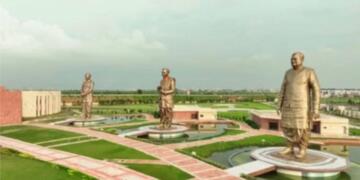Aerospace engineering stands at the forefront of technological advancement, blending the principles of aerodynamics, materials science, and propulsion to innovate and enhance flight capabilities. This field encompasses the development of aircraft, spacecraft, satellites, and UAVs, playing a crucial role in both commercial and defense sectors. Engineers in this domain continually push the boundaries of what is possible, striving to create more efficient, sustainable, and high-performing aerial and space vehicles. As the demand for sophisticated surveillance, communication, and scientific research tools grows, aerospace engineering remains a pivotal field in shaping the future of transportation and exploration.
Shreyas Kotian, a visionary in aerospace engineering, has been instrumental in advancing the field through his innovative designs and methodologies. Known for his expertise in aerodynamics and UAV design, Kotian has consistently contributed to the development of cutting-edge aerospace technologies. His work emphasizes the importance of integrating advanced engineering principles with practical applications, particularly in areas requiring high precision and efficiency. Kotian’s dedication to pushing the limits of current technologies has earned him recognition and respect within the aerospace community, solidifying his reputation as a forward-thinking engineer.
Kotian’s recent project, presented at a top international peer-reviewed conference in aerospace engineering, aeronautics, and astronautics, exemplifies his innovative approach. The paper, titled “Methodology for Conceptual Design of HALE UAV for Coastal Surveying,” addresses the development of a High-Altitude Long Endurance (HALE) Unmanned Aerial Vehicle (UAV) designed for coastal surveying of the Indian subcontinent. This project highlights the increasing use of UAVs in various domains and underscores the need for specialized UAVs in scientific surveying. The proposed HALE UAV aims to provide precise shoreline maps, digital elevation data, habitat monitoring, and shoreline change detection.
The study introduces a comprehensive methodology for the conceptual design of HALE UAVs, involving phases such as drag estimation, initial sizing, constraint analysis, and wing and tail mass estimation. The research reviews existing literature on UAV design, aerodynamics, and coastal monitoring, emphasizing the advantages of HALE UAVs due to their extended flight duration and high-altitude capabilities. By analyzing parameters like drag coefficients, maximum take-off weight, wing and tail mass, and performance constraints, Kotian’s methodology ensures a robust and efficient UAV design. The proposed configuration features a high-wing, V-tail design powered by a high bypass ratio turbofan engine, showcasing the feasibility of the design and suggesting future refinements, particularly in engine sizing. This work not only demonstrates Kotian’s innovative prowess but also provides a valuable framework for future developments in UAV technology for coastal surveying applications.
Throughout his academic and professional career, Kotian remained committed to this passion for coastal conservation. He sought opportunities to merge his love for aerospace engineering with his desire to make a positive impact on coastal ecosystems. This led him to focus on the development of UAVs tailored specifically for coastal surveying, where traditional methods often fell short due to limitations in coverage, precision, and cost.
Kotian’s journey wasn’t without its hurdles. Like many trailblazers in their fields, he faced skepticism and challenges along the way. But his perseverance and unwavering belief in the potential of his ideas drove him forward. Through countless hours of research, testing, and collaboration with experts across disciplines, he honed his skills and refined his approach, ultimately leading to the breakthroughs showcased in his recent project. As he continues to push the boundaries of aerospace engineering, Shreyas Kotian stands as a beacon of innovation and a testament to the endless possibilities that lie at the intersection of technology and human ingenuity.

































